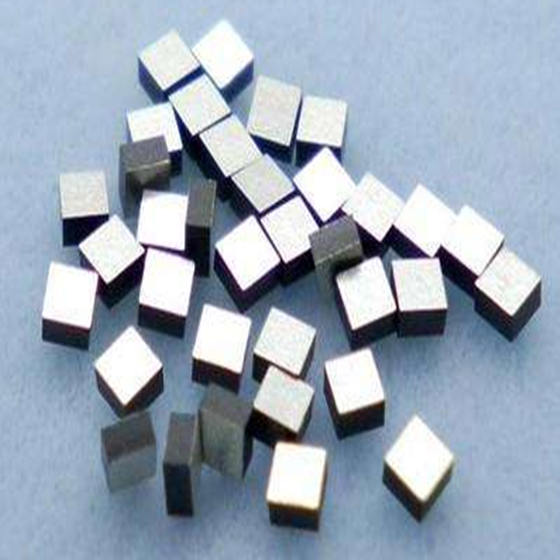NTC thermistor chips, the acronym for Negative Temperature Coefficient thermistors, are remarkable electronic components that play a crucial role in modern electronics. These miniature devices are designed with precision to exhibit a highly specific change in electrical resistance in response to temperature fluctuations. By virtue of their unique properties, NTC thermistor chips have earned a prominent place in various applications across industries.
Mechanism of Operation
At the heart of NTC thermistor chips lies their fundamental operation principle: the negative temperature coefficient. Unlike traditional resistors, the resistance of these chips decreases as the temperature rises.
This behavior is governed by the arrangement of semiconducting materials within the chip. As temperature increases, more charge carriers are released, resulting in increased conductivity and decreased resistance. This inherent property makes NTC thermistor chips invaluable in a wide range of scenarios.
Advantages of NTC Thermistor Chips
High Sensitivity to Temperature Changes
One of the standout advantages of NTC thermistor chips is their remarkable sensitivity to even minor temperature fluctuations. This characteristic makes them suitable for applications where precision and responsiveness are paramount, such as medical devices, environmental monitoring systems, and temperature-compensated crystal oscillators.
Compact Size and Integration
Despite their intricate functionality, NTC thermistor chips maintain a compact form factor. This compactness facilitates their integration into various devices without significantly altering the device's overall design or dimensions. This attribute is particularly advantageous in space-constrained applications, where every millimeter counts.
Cost-Effectiveness in Mass Production
NTC thermistor chips are designed with mass production in mind. Their manufacturing processes have been optimized to achieve cost-effectiveness without compromising performance. This makes them a viable choice for applications that require large quantities of sensors or protective components without straining the budget.
Applications of NTC Thermistor Chips
Temperature Sensing and Compensation
One of the primary applications of NTC thermistor chips is temperature sensing and compensation. These chips are employed as temperature sensors in various systems, from consumer electronics to industrial machinery. Their sensitivity to temperature changes allows them to provide accurate and rapid feedback, enabling precise temperature control and regulation. In automotive engines, NTC thermistor chips contribute to efficient combustion by monitoring engine temperature and adjusting fuel injection accordingly.
Overcurrent Protection in Electronics
Another noteworthy role of NTC thermistor chips is in providing overcurrent protection in electronic circuits. These chips exhibit a surge in resistance when subjected to excessive current levels, acting as a self-regulating mechanism. When incorporated into circuitry, they act as a safeguard, limiting current flow and preventing damage to sensitive components. This feature is particularly crucial in power-hungry applications such as motor drives and power supply units.
Inrush Current Limiters in Power Supplies
NTC thermistor chips also find utility as inrush current limiters, particularly in power supplies. During the initial power-up phase, electronic devices can experience a surge of current, potentially damaging components. NTC thermistor chips mitigate this risk by presenting a higher resistance during start-up, gradually allowing current flow to stabilize. This controlled approach prevents sudden spikes in current and ensures a smoother power-up sequence.
Challenges and Considerations
Non-Linearity and Calibration
One of the challenges associated with NTC thermistor chips is their inherent non-linearity. The resistance-temperature relationship is not always a simple linear curve, which can complicate accurate temperature readings. Calibration techniques and compensation algorithms must be employed to ensure precise measurements.
Self-Heating Effects
NTC thermistor chips, while responsive to temperature changes, generate heat themselves during operation due to the passage of current. This self-heating effect can lead to inaccuracies in temperature measurements, especially in applications with rapid temperature changes. Mitigation strategies involve careful circuit design and heat dissipation measures.
Temperature Range Limitations
While NTC thermistor chips excel in their sensitivity to temperature changes, they do have limitations in terms of the temperature range they can effectively operate in. Extreme temperatures, whether high or low, can cause deviations from expected behavior. For applications spanning a wide temperature spectrum, complementary sensor types or compensation techniques might be necessary.
Conclusion
NTC thermistor chips epitomize the fusion of precision engineering and electronics. Their ability to convert temperature variations into electrical responses has revolutionized temperature monitoring, compensation, and protection in various domains. As technology advances, these tiny chips are likely to continue playing a pivotal role in enhancing the efficiency and reliability of countless electronic systems.








